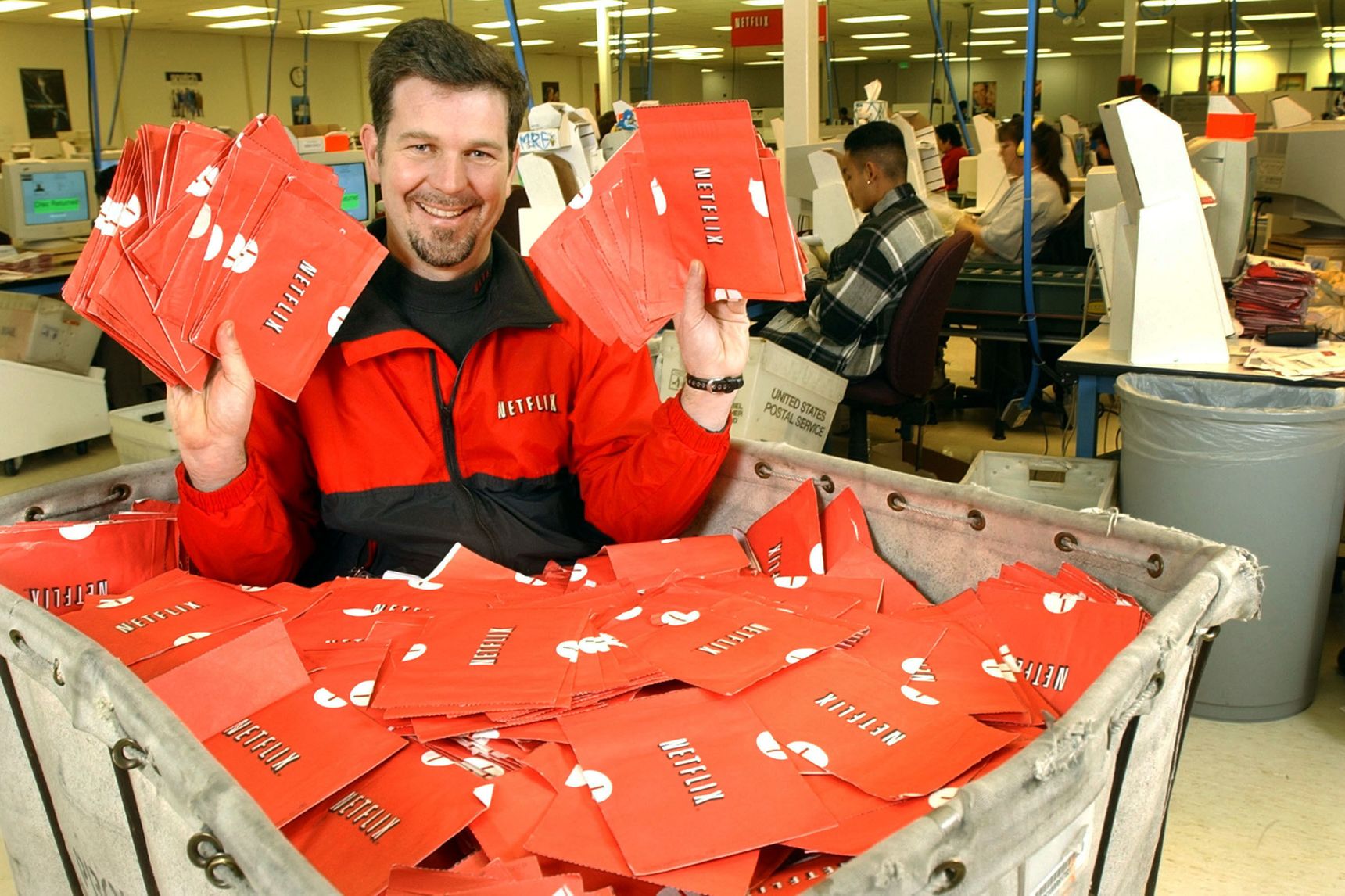IT ALL STARTED WITH THE VCR. In 1975, when Sony introduced the notion of “time shift,” as cofounder Akio Morita dubbed it, television was a staid and profitable business controlled by three national broadcast networks. All in the Family, the number-one show, was watched in 30 percent of American homes. Cable was something you got for better reception. The big question facing the industry was whether Happy Days would propel ABC to the top. (It did.)
 This year’s top series, CSI, was on in just 16 percent of households. The three broadcast networks are now six, most of them struggling to make a profit. More than 300 additional channels are available through digital cable and satellite. And time-shifting has progressed to the point that millions of viewers rely not on a VCR but on a digital video recorder, which makes it easy to find anything on those hundreds of channels and watch it anytime while fast-forwarding through the ads. The revolution that started in analog is now exploding in digital, and suddenly everything about television is up for grabs — the way we watch it and the ads that pay for it, the kinds of programs we get and the future of the networks that carry them.
This year’s top series, CSI, was on in just 16 percent of households. The three broadcast networks are now six, most of them struggling to make a profit. More than 300 additional channels are available through digital cable and satellite. And time-shifting has progressed to the point that millions of viewers rely not on a VCR but on a digital video recorder, which makes it easy to find anything on those hundreds of channels and watch it anytime while fast-forwarding through the ads. The revolution that started in analog is now exploding in digital, and suddenly everything about television is up for grabs — the way we watch it and the ads that pay for it, the kinds of programs we get and the future of the networks that carry them.
The DVR, pioneered in the late ’90s by TiVo, is the linchpin. It’s taking hold at the same time that digital compression — which multiplies tenfold the number of signals a slice of bandwidth can carry — is enabling cable and satellite providers to pump out channels targeted to narrowly defined audiences. Throw in electronic programming guides — search functions that essentially let you Google your TV — and the implications for Hollywood are, as one exec puts it, “cataclysmic.” Technology is empowering the couch potato. The fundamental premise of traditional broadcasting is its ability to control the viewer — to deliver tens of millions of eyeballs to advertisers and to direct those eyeballs from prime time all the way to late night. That control has been eroding ever since the advent of the VCR, but now it’s being blasted away entirely.
As is usually the case, the revolution has not proceeded as forecast. Digital broadcasting is still stalled, and high-definition TV along with it. Although TiVo engendered panic in the industry after it appeared, it’s proved a hard sell with consumers as a stand-alone device. Forrester discovered last year that 70 percent of consumers didn’t even know what a DVR was.
Around the same time, satellite companies started building DVRs into their set-top boxes — and sales finally started to take off. In the growing competition between cable and satellite, DVRs have become bait to lure subscribers. When cable providers started pushing video-on-demand, satellite companies — unable to deliver on-demand service — countered with DVRs. They’ve become so popular that cable operators like Time Warner and Comcast are now offering the systems as well. In the past year, the number of DVR-equipped households has more than doubled to 4 million. Forrester projects that in three years, 27 percent of US homes will have DVRs and one-third will have video-on-demand. Either way, control shifts from the networks to the viewer.
Television is run by people who make their living telling other people what to watch and when, while cramming in more and more ads to pay for it all. Plug in a device that short-circuits the system and they’re in trouble. Network execs don’t get paid millions to admit their best years are behind them. But late at night, when they’re sitting in their Dolby surround-sound home theaters flipping past Letterman and Leno and Nightline to channels 252 and 286 and beyond, or checking their TiVos to see what they missed during dinner, they know.
“This business is not broken in such a way that it’s going to implode next week or next year,” declares Alec Gerster, CEO of Initiative Worldwide, an agency that purchases $21 billion in ads annually on behalf of such clients as Bayer, BellSouth, and Coors. “But it is going to be increasingly difficult to do the same thing each year as if we were back in 1980. There is a freight train coming at us, and the only thing holding it back is the time it takes for consumers to bend this technology to the ways they want to use it.”
“It’s all about the consumer,” says Jed Petrick, president of the WB network. “The question is, how does the business model find a way to maintain itself or adapt to the new consumer model?”
TO SOME OF THE SAVVIER PEOPLE IN ADVERTISING, the real problem isn’t the DVR. The problem is the 30-second spot itself — “the :30,” in industry parlance. “We are dealing with a world-class disconnect between the way we’re trying to communicate and the way the consumer wants us to communicate,” says Gerster. All DVRs have done is force the ad business to admit the obvious — that most people will avoid commercials whenever possible. And it isn’t just the spots themselves, it’s their ubiquity. The networks are now squeezing 16 to 17 minutes of ads and promos into each hour of programming, up from 14 minutes a decade ago. “Technology gives you the ability to skip commercials, and clutter gives you the reason,” says Andrew Green, an executive at rival buying agency OMD, which handles clients like Pepsi and McDonald’s. “We are driving this thing into the ground.”
So far, the networks have been able to get more and more money for fewer and fewer top-rated shows because advertisers are desperate to pile into the handful of vehicles that are left. At last spring’s upfront market, where ad buyers sign up for airtime on the upcoming fall season, they dumped $9.3 billion on the six broadcast networks, well over the record $8.1 billion they’d spent the year before. But this won’t go on forever. A recent Forrester survey showed that if 30 million households had DVRs — a milestone we’re projected to reach in early 2007 — three-quarters of the national advertisers would cut their spending on TV. And just because advertisers are buying today doesn’t mean they’re happy about it. “Most clients are losing faith that they’re going to put the money out there and get results,” says Gerster. “So how do I get my message out in a way that people will at worst tolerate it, and at best be engaged by it?”
That’s the challenge. The most obvious alternative is product placement — product integration, to use the current buzzword. But ad agencies operate on commission, a percentage of the price of the ads they buy. They never bothered with product placement until their clients started pressuring them to come up with something new. Now they’re faced with questions like, how do you value a Coke can that appears for 15 seconds on Friends? Is it worth more if Jennifer Aniston drinks from it than if it just sits on the kitchen counter? How much more?
“Technology gives you the ability to skip ads. Clutter gives you the reason.”
A New York marketing entrepreneur named Frank Zazza claims to have the answer. Zazza has come up with a scheme that grades placements by 10 levels of impact, from having the product in the background to naming an entire episode after it. Mix this in with his carefully calibrated “awareness scale” plus a couple of other factors, and you get the dollar value of a placement. For $300,000 you could buy, say, 3 seconds of “verbal” (talk about the product) or 90 seconds of background. “This has the ability to completely change the dynamic of television and the way it’s bought,” says Peter Gardiner, chief media officer of Deutsch, one of New York’s hottest ad agencies.
Zazza has his eye on an even bigger prize. He’s working with a company that inserts virtual billboards into sports broadcasts to apply the same technology to product integration. Instead of having an actual Coke can on the set of Friends, the producers could digitally insert it before the show airs. If Pepsi offered more for the DVD version of the series, they could replace the Coke with a Pepsi. It’s product integration without the product. What this means for the networks is unclear; the important thing, Zazza says, is to keep the advertisers happy: “Unilever, Procter & Gamble — they’re going to be around a long time after CSI is kicking up daisies.”
But product integration, virtual or otherwise, isn’t enough. Big brands want impact — the kind you get from having your identity tied to a hit show. In the ’50s, when advertisers routinely produced their own shows, that meant programs with names like Ford Theatre and Ford Star Jubilee. Today it means Ford everywhere you look on American Idol and 24.
At first, Ford tried to develop a show itself. It had been a while since anyone in Hollywood got a pitch from a carmaker, so it was news three years ago when Ford and its ad agency, J. Walter Thompson, teamed up with Lions Gate Entertainment to make a trekking-through-the-wilderness reality series. Based on a hit format from Norway, the show was titled No Boundaries, after the tagline for the company’s SUV campaign. The WB finally aired it a year and a half later, only to drop it after six episodes. “We were very proud of No Boundaries,” says Rich Stoddart, a marketing manager at Ford. “But you can make the most wonderful content in the world, and without a commitment from a distribution outlet, you have an audience of one.”
Since then, Ford has stuck to shows that a network has already committed to. It’s had the American Idol contestants sing car songs: “Mustang Sally,” “Fun, Fun, Fun (’til her daddy takes the T-Bird away).” It’s gotten The Tonight Show to park a Mustang in the studio audience: “The best seats in the house,” Leno quipped. And this October, for the second straight year, it’s introducing the season premiere of 24, the Fox series starring Kiefer Sutherland as a rogue CIA agent. Ford is presenting the first episode without commercial interruption, bookending it with 3-minute ads. As part of the deal, Sutherland drives an Expedition, and other models are woven into the story. “Basically, we own the show,” says Rob Donnell, who heads a four-person team in JWT’s Detroit office that looks for innovative ways to promote the brand on TV. It seems to work: The ad-rating service IAG reported that the pair of 3-minute commercials that introduced 24 last season, though never rebroadcast, were among the most-remembered ads of the year. No other automotive spots even placed.
Meanwhile, network execs are trying desperately to hang on to elements of the past. In August, NBC announced a scheme to sandwich minimovies between its 30-second spots in an attempt to keep viewers glued to their sets — as if there wasn’t enough clutter already. But ad people are moving on. Instead of one product — the :30 — Madison Avenue is developing an entire arsenal, from 3-minute “advertainment” sequences like Ford’s to 5-second spots too short to skip.
The irony is that, as networks and ad agencies scramble, the ultimate advertising innovation may be brewing at TiVo: spots that lure viewers into handing over their contact info for a follow-up. The project, known as the TiVo Showcase, relies on the firm’s ability to feed special programming directly to its subscribers’ DVRs. This summer, for example, the company partnered with Chrysler to present video clips featuring its new Crossfire sports coupe.
DVRs may seem like an unlikely friend to advertisers, but TiVo’s new president, Marty Yudkovitz, likes to talk about his company’s ability to “target the viewer and take him deeper inside the message.” And while TiVo makes a point of saying it doesn’t collect data on individual subscribers, viewers who want to know more about the showcase product can “opt in” by requesting a CD-ROM, landing them in a database of possible customers. Ultimately, Yudkovitz argues, DVRs could let television fulfill the promise Web advertising made in the boom years: ads targeted not just by demographic, not just by zip code, but by household, based on what the people who live there watch and want. “Television has always been great at brand awareness,” he says, “but that’s it. Measurability, targeting, the marriage of brand awareness and direct marketing — that is the holy grail.” There’s only one catch: TiVo — not a network — gets the revenue from these ads.
What ads look like, how to figure their worth, who gets paid for them — “every part of the model is under threat,” says OMD’s Andrew Green. “Which is wonderful, really, because it makes for an exciting life.”
For television executives, ads are only half the equation — the half that pays the bills, but not the only half that matters. DVRs, in tandem with the explosion of channels in digital cable and satellite, will disrupt programming as ruthlessly as they have advertising. Successful programming is why NBC can claim to have “Must See TV” on Thursday nights, and why it can charge top dollar for its ad time as well. If time slots become irrelevant, scheduling does, too.
Marty Yudkovitz argues that DVRs — make that TiVo — can help television programmers as well as advertisers. “Programmers want to know not only who’s watching, but where they came from and where they’re going,” he says. TiVo can tell them what the patterns are. It can also program a message to appear touting, say, next week’s guest star on Will & Grace while you’re watching an earlier episode. “It’s a very powerful place to be,” he maintains.
But it will take more than this to make the future work, particularly for programmers at the four biggest broadcasting networks — ABC, CBS, NBC, and Fox. To people in the industry, these four are what it’s all about: They get the biggest audiences, the most money, and the most buzz. Yet broadcast television is almost an anachronism — some 85 percent of US households now get TV via cable or satellite — and the giant broadcast networks, with their common-denominator programming, are increasingly outdated as well. “Mass audiences, mass media — a lot of people are clinging to those old models,” says Tim Hanlon, a vice president at Starcom MediaVest, a global marketing consultancy that counts TiVo among its clients. “But it’s not really that way anymore.”
“Broad-based networks will go the way of ‘The Saturday Evening Post.’”

 October 1, 2003
October 1, 2003




